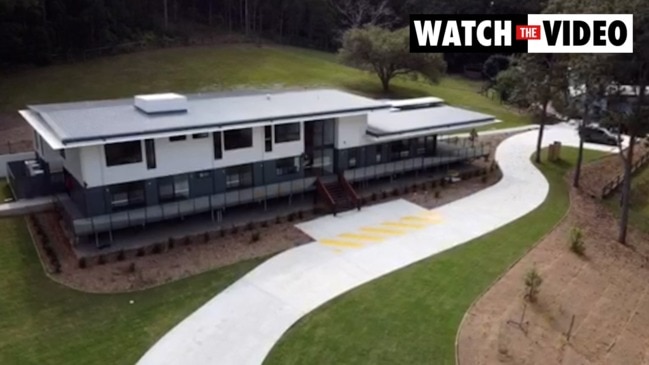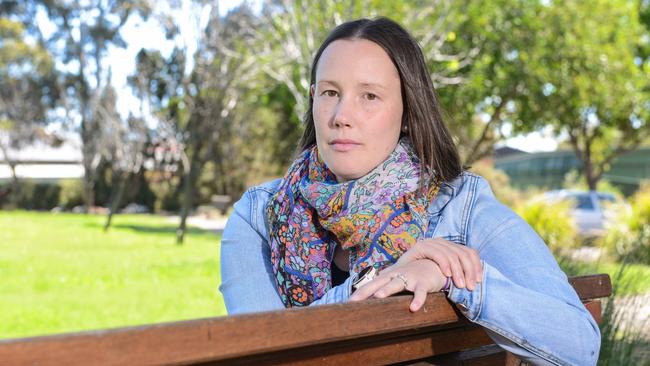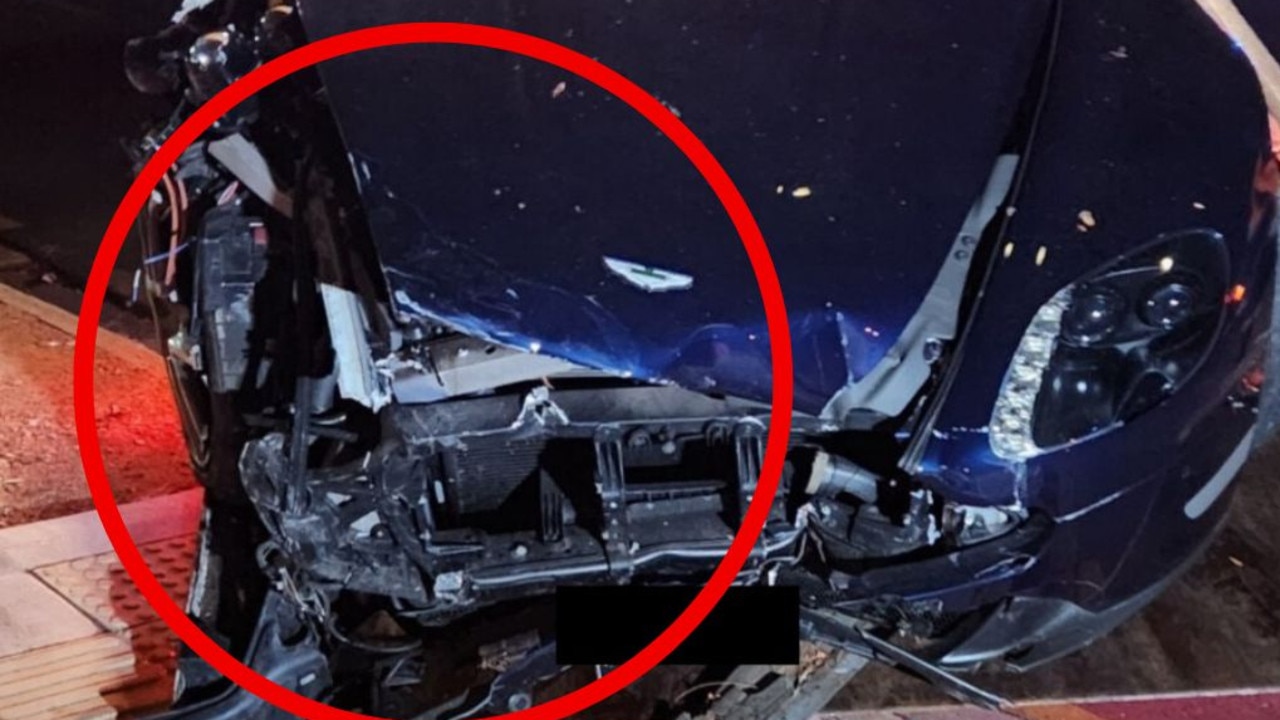Recovered eating disorder patient Elise Howie shares her story for mental health campaign
Hospitalised, learning to eat again and wheelchair-bound – this was Elise’s reality battling a deadly eating disorder. Now, on the other side, she wants others to know that life is worth fighting for.

SA News
Don't miss out on the headlines from SA News. Followed categories will be added to My News.
Sitting on a hospital bed, learning how to eat again and being pushed everywhere in a wheelchair to conserve energy – this was Elise Howie’s reality as she battled an eating disorder that was slowly killing her.
Now on the other side of that battle, the 31-year-old wants everyone “in the thick of it” to know that life is worth fighting for.
“Hold on and keep going because I’m proof that life can, and does, get a lot better,” she said. “I went on to uni, started working, got married, had a baby. Living life without an eating disorder is so, so worth it.”
Mrs Howie is speaking about her recovery for The Advertiser’s Can We Talk campaign, which is encouraging young South Australians to open up about their mental health struggles and seek help.
The mother of one first became unwell at the age of 12, about the time her mother was diagnosed with breast cancer.
She was initially referred to the Child and Adolescent Mental Health Service but after a couple of years was referred to a specialist psychiatrist.
Not long after, at age 15, she was admitted to Flinders Medical Centre for treatment.
Mrs Howie spent another two stints in hospital, in early 2007 and early 2008 as she entered year 12.
Her longest stay in hospital was six weeks – including four weeks spent effectively bed-bound or being transported in a wheelchair as she came to terms with eating again.

“At the time there was a lot of shame. It was really hard to talk to people about it,” Mrs Howie said.
“I think back and see it as this passive form of suicide, in that you just kind of assume that if you keep going the way that you’re going then you’re not going to survive.
“Going to bed and thinking I might not wake up in the morning … at the time, being so unwell, that’s not necessarily a bad thing in your mind. You can hear people saying that if you continue on like this … you could die.
“But it’s a real struggle to get to a point where you believe all the other people over the lies that your eating disorder is telling you.”
Mrs Howie stressed that her eating disorder was a coping mechanism for “feeling like I had some control in my life” rather than any attempt to look a certain way.
“My experience was that it’s like a voice in your head,” she said.
“It’s a really hard thing to understand logically. It’s like a best friend and a worst enemy.”
After years of fighting Mrs Howie remembers deciding to give recovery “one last shot”.
“By that stage I felt like I’d tried everything and nothing was working so I said to myself I’ll try one more time and if this doesn’t work … then I don’t care what happens to me anymore,” she said.
“I was lucky that that was the time that it worked, and I haven’t looked back from that.”
Mrs Howie started working with a psychologist “who I clicked really well with” and was “able to bring everything that I’d learned over the previous six years together”.
Before then it had been difficult to imagine that future dreams were “going to be possible, let alone likely”.
“Now,” Mrs Howie said, “those big moments in life – graduating from uni, getting married, having a baby – they are times when I stop and reflect on how lucky I am to still be here.”
Wait for treatment as eating disorder cases on the rise
Hundreds more children are being hospitalised with eating disorders and parents are being urged to seek help early if their “gut instinct” says their child is struggling.
Latest figures show an almost 50 per cent increase in young patients admitted to hospital and a 20 per cent rise in demand for day programs and outpatient services – including from children as young as 10 or 11.
Demand means the average wait time between a referral to the Statewide Paediatric Eating Disorder Service (SPEDS) and assessment is one month, but patients wait an average of another three months to start treatment.
SA Health says it is trying to reduce wait times by extending clinic hours and recruiting more dietetics, nursing, psychology and psychiatry staff.
A new treatment and research centre is planned for the Repat Health Precinct at Daw Park, but construction is not due to begin until mid-2023.
The federal government committed $5m to the project in 2019. Another $2.1m was raised through Breakthrough Mental Health Research Foundation.
The centre will be managed by Breakthrough and SA Health and is expected to offer at least six beds in a live-in facility and treat at least 10 outpatients at a time through a day program.
Last financial year there were 837 children or teenagers admitted to the Women’s and Children’s Hospital or Flinders Medical Centre for eating disorder treatment, up from 587 in 2020-21. Patients usually stay for a number of weeks.
Another 411 youths accessed SPEDS as outpatients last financial year, up from 340 in 2020-21.
The majority of young people accessing the service were aged 13 to 17.

SA Health spokeswoman said young patients were “assessed and triaged in response to their clinical severity and need” and given “rapid access to inpatient care if required”.
Head of unit of the Statewide Eating Disorder Service Randall Long told The Advertiser that Covid-19 lockdowns and school closures and the impact of trauma and abuse were among factors contributing to the increase. GPs were also recognising eating disorders and referring patients early.
Dr Long stressed that “eating disorders don’t have a shape” and noted that more boys and young men, and young people who identified as LGBTIQ+, were among those seeking help.
Data shows people with eating disorders are at higher risk of self-harm and death by suicide so Dr Long urged young people and their families to seek help at the first sign of concern.
“I still have a lot of faith in parental gut instinct,” he said. “You’ve watched your kid grow and you know them. (Especially in) Year 10 and 11, there are a lot of changes going on in the body and the brain. It’s important not to just write it off as the naturally moody, withdrawn teenager. We’d much rather have those conversations and it be a false alarm.”
Flinders University’s Professor Murray Drummond, who has researched body image and eating disorders for two decades, said struggling with an eating disorder was “all consuming”.
“There is also still this lack of awareness that young men can actually develop eating disorders,” he said.
Professor Drummond said young people who sought treatment often wanted to work with “a social worker or psychologist or dietitian that had actually been through this and had that level of understanding”.
More Coverage
Originally published as Recovered eating disorder patient Elise Howie shares her story for mental health campaign





